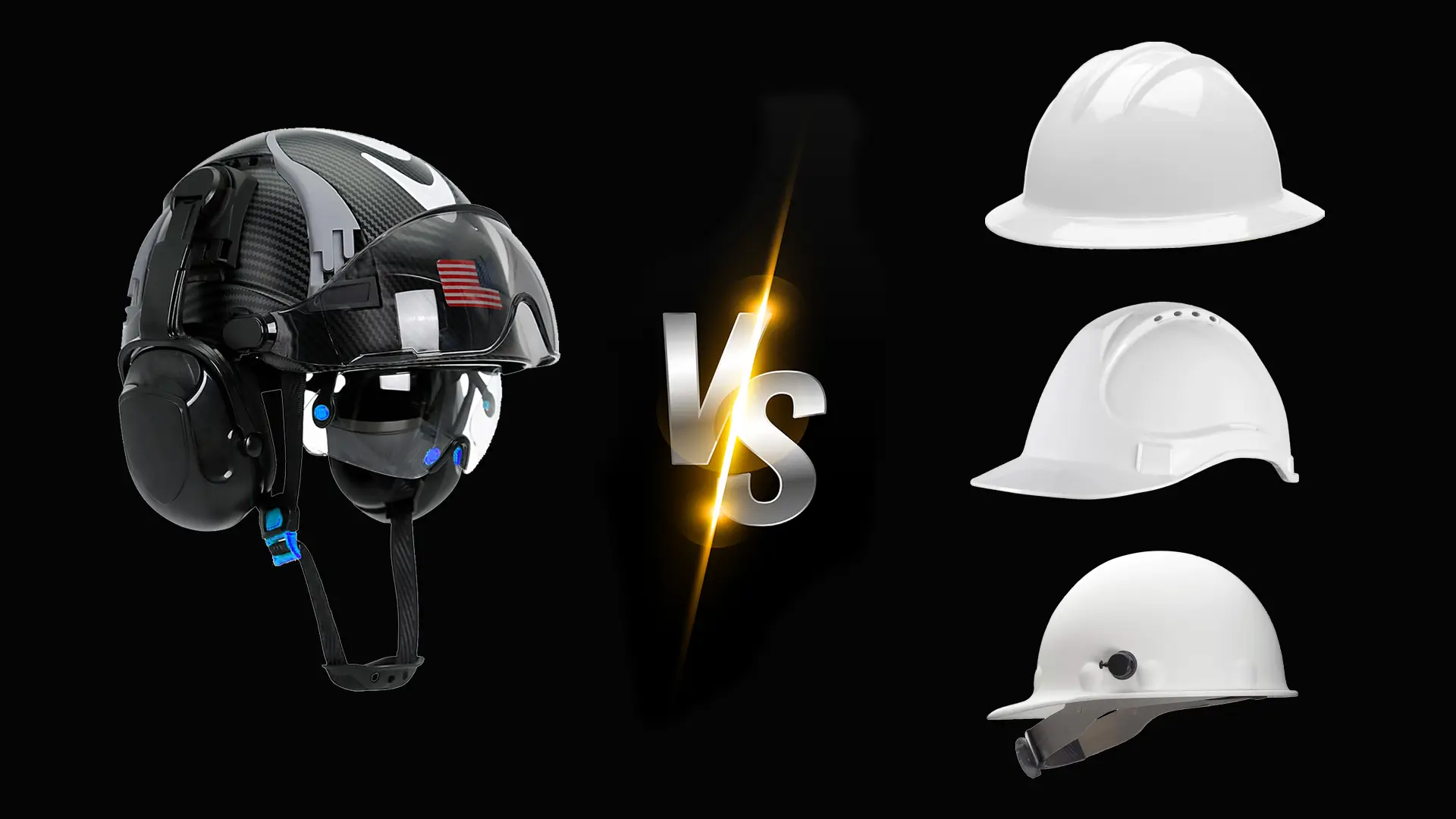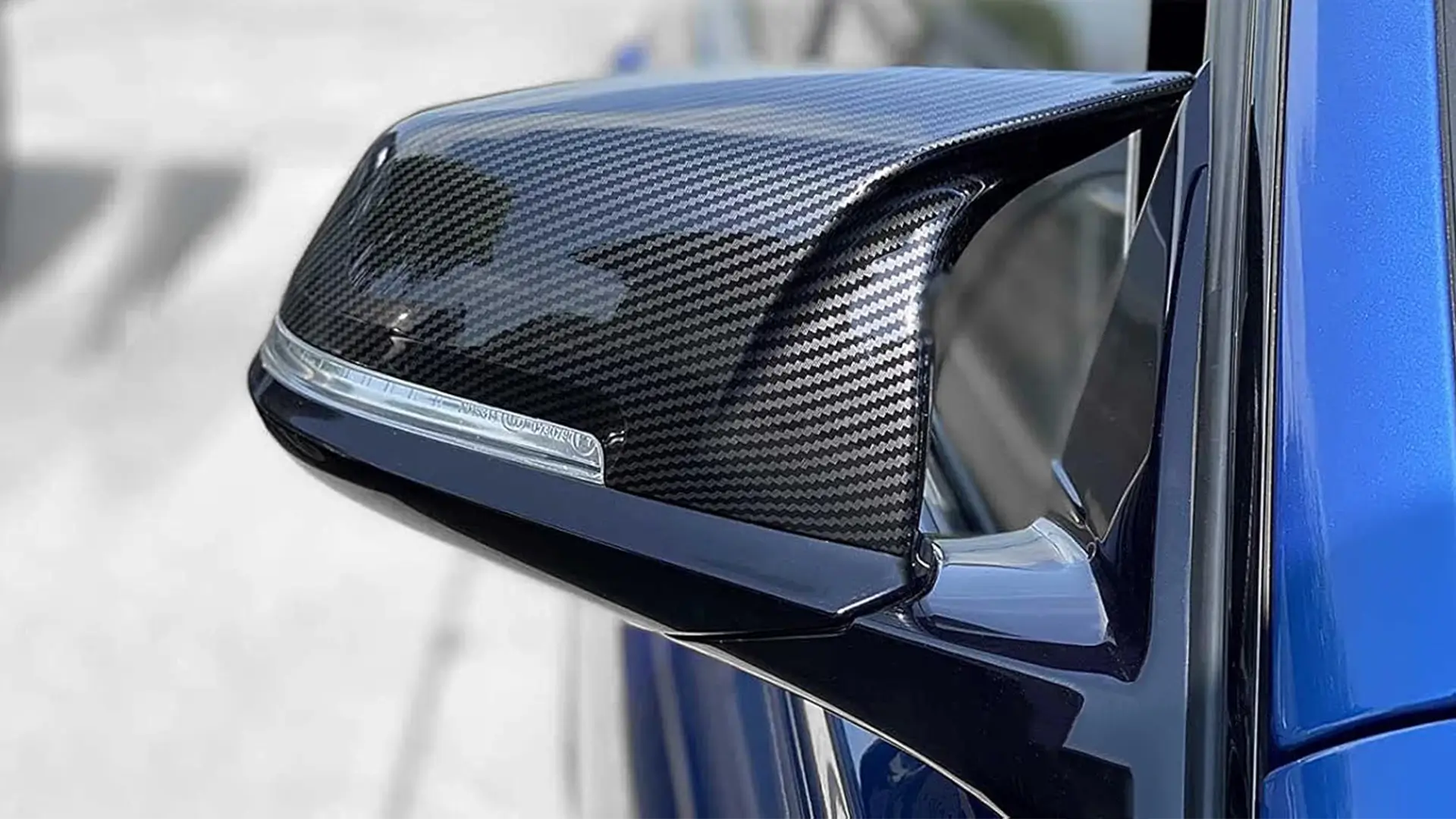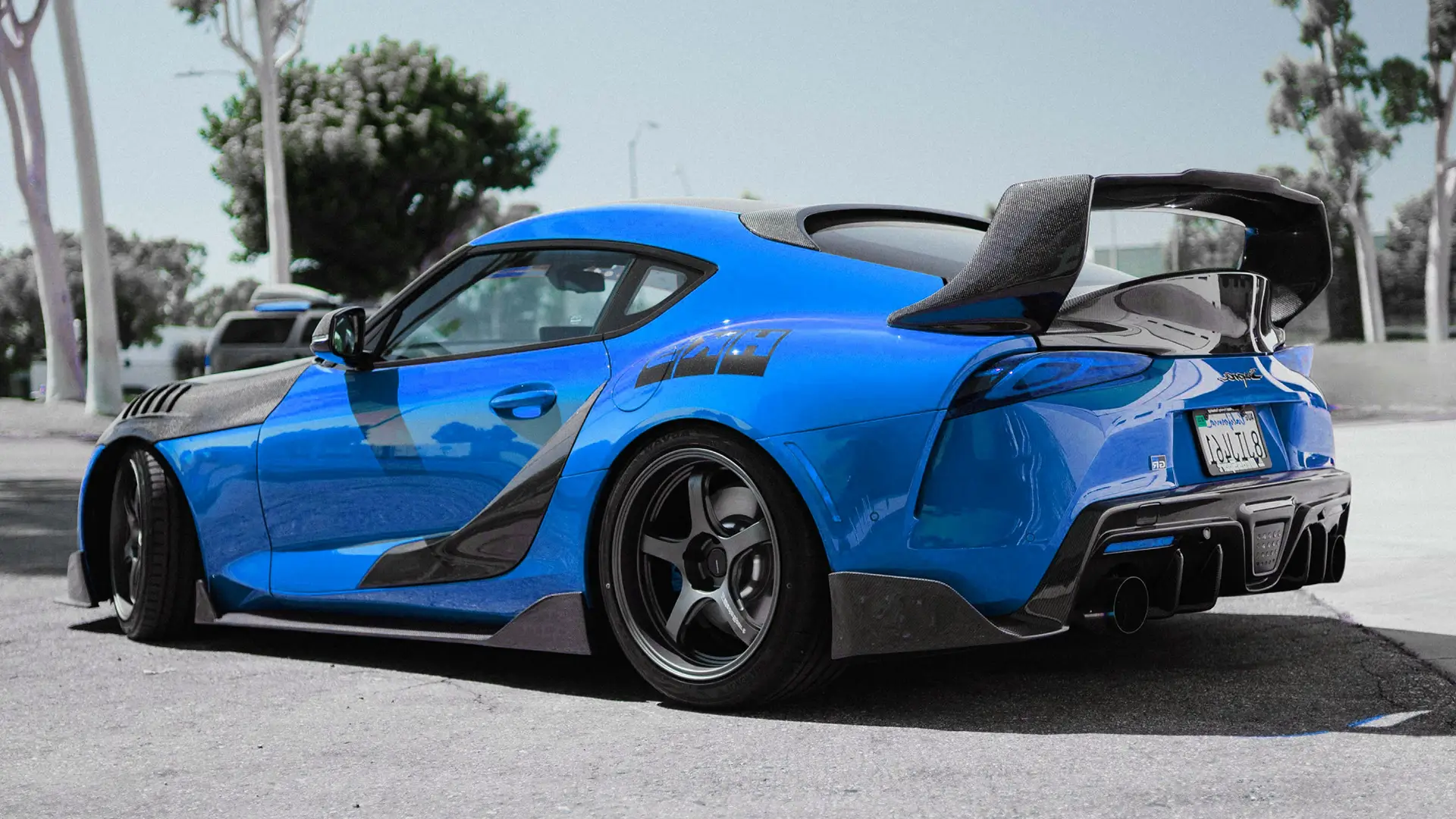The Significance of Material Choice in Hard Hats
The material used in a hard hat determines its ability to protect against workplace hazards while ensuring wearer comfort and durability. Traditional materials like HDPE, ABS, fiberglass, and steel have been widely used, but advancements in composite technology have positioned carbon fiber hard hats as a superior option. At Alizn, we craft carbon fiber hard hats using intricately woven carbon fibers bonded with high-performance resin, creating a lightweight yet robust product. Known for its use in demanding applications like aerospace and automotive engineering, carbon fiber is revolutionizing personal protective equipment (PPE). This article explores how carbon fiber hard hats stack up against traditional materials to help you make an informed choice.
Impact Resistance and Structural Performance
A hard hat’s primary role is to protect against impacts from falling objects or collisions, making impact resistance a critical factor. Carbon fiber hard hats excel due to their high tensile strength and ability to absorb and distribute impact energy effectively.
| Material | Impact Resistance | Strength-to-Weight Ratio |
|---|---|---|
| Carbon Fiber | High; excellent energy absorption | Superior |
| HDPE (Plastic) | Moderate; prone to cracking under heavy impact | Moderate |
| ABS (Plastic) | Good; better than HDPE but less robust than carbon fiber | Good |
| Fiberglass | Good; resistant to cracking but heavier | Good |
| Steel | Very high; durable but prone to denting | Poor due to heavy weight |
Hard hat carbon fiber designs offer exceptional strength relative to their weight, allowing them to withstand significant impacts without deforming. This makes them ideal for high-risk environments like construction or heavy industry. HDPE hard hats, while cost-effective, are prone to cracking under severe impacts. ABS plastic provides improved impact resistance over HDPE, offering a balance of strength and affordability, but it falls short of carbon fiber’s superior energy absorption. Fiberglass resists cracking but is heavier, while steel, though highly durable, is susceptible to denting, which can compromise its protective capabilities. At Alizn, our carbon fiber hard hats are designed to meet rigorous safety standards, such as ANSI Z89.1 and EN 397, ensuring reliable protection across diverse applications.
Weight and Wearer Comfort
Comfort is essential for workers who wear hard hats for extended periods, as excessive weight can lead to fatigue, neck strain, and reduced productivity. Carbon fiber hard hats stand out for their lightweight construction, enhancing all-day wearability.
| Material | Average Weight (oz) | Comfort Level |
|---|---|---|
| Carbon Fiber | 10-14 | Exceptional; lightweight and ergonomic |
| HDPE (Plastic) | 12-16 | Moderate; lightweight but less durable |
| ABS (Plastic) | 12-15 | Good; lightweight and comfortable |
| Fiberglass | 16-20 | Fair; heavier, may cause discomfort |
| Steel | 20-30 | Low; heavy, contributes to fatigue |
Carbon fiber hard hats, weighing between 10 and 14 ounces, significantly reduce physical strain compared to fiberglass and steel. ABS hard hats are slightly lighter than HDPE, offering good comfort for moderate-duty applications, but they lack the premium ergonomics of carbon fiber. At Alizn, we incorporate adjustable suspension systems and breathable padding into our hard hat carbon fiber designs, ensuring a secure fit and maximum comfort for workers in industries like construction, mining, or utilities.
Durability and Longevity
A hard hat’s durability directly impacts its cost-effectiveness and ability to provide consistent protection. Carbon fiber hard hats are renowned for their resilience, maintaining performance in harsh conditions.
| Material | Durability | Expected Lifespan (Years) |
|---|---|---|
| Carbon Fiber | Outstanding; resists UV, chemicals, abrasion | 5-7 |
| HDPE (Plastic) | Fair; prone to UV degradation | 3-5 |
| ABS (Plastic) | Good; better UV resistance than HDPE | 4-6 |
| Fiberglass | Good; chemically resistant but heavier | 4-6 |
| Steel | Strong; susceptible to rust and denting | 5-8 |
Hard hats carbon fiber are highly resistant to environmental factors such as UV radiation, extreme temperatures, and chemical exposure. Unlike HDPE, which degrades and becomes brittle under prolonged sun exposure, carbon fiber maintains its structural integrity. ABS plastic offers better UV resistance than HDPE, making it a viable option for outdoor use, but it is less durable than carbon fiber. Steel hard hats are robust but prone to corrosion in humid or chemical-heavy environments. Fiberglass provides solid durability but is heavier and less resistant to extreme conditions. At Alizn, our carbon fiber hard hats are engineered for longevity, reducing replacement frequency and delivering long-term value.
Heat Resistance and Thermal Performance
In industries where workers are exposed to high temperatures, such as foundries or oil refineries, a hard hat’s heat resistance is crucial. Carbon fiber hard hats offer excellent thermal stability, maintaining structural integrity under elevated temperatures.
| Material | Heat Resistance | Maximum Operating Temperature (°F) |
|---|---|---|
| Carbon Fiber | Excellent; maintains integrity up to 400°F | 400 |
| HDPE (Plastic) | Poor; softens or deforms above 180°F | 180 |
| ABS (Plastic) | Moderate; stable up to 220°F | 220 |
| Fiberglass | Very good; withstands up to 500°F | 500 |
| Steel | Excellent; stable at high temperatures | 600+ |
Carbon fiber hard hats perform reliably in high-temperature environments, withstanding temperatures up to 400°F without compromising strength. HDPE is unsuitable for high-heat settings, as it softens or deforms above 180°F. ABS plastic offers better heat resistance than HDPE, handling temperatures up to 220°F, but it is less effective than carbon fiber in extreme conditions. Fiberglass excels in heat resistance, tolerating temperatures up to 500°F, while steel can withstand even higher temperatures but is impractical due to its weight. At Alizn, our carbon fiber hard hats are designed to balance heat resistance with lightweight construction, making them ideal for industries with moderate to high thermal exposure.
Electrical Insulation Properties
In environments with electrical hazards, such as power plants or electrical maintenance, a hard hat’s ability to insulate against electrical currents is critical. Carbon fiber hard hats provide unique advantages in this area, depending on their specific composition.
| Material | Electrical Insulation | ANSI Z89.1 Classification |
|---|---|---|
| Carbon Fiber | Limited; conductive unless modified | Type I, Class C (non-insulating) |
| HDPE (Plastic) | Excellent; non-conductive | Type I, Class E/G |
| ABS (Plastic) | Excellent; non-conductive | Type I, Class E/G |
| Fiberglass | Excellent; non-conductive | Type I, Class E/G |
| Steel | Poor; highly conductive | Type I, Class C |
Hard hat carbon fiber designs are typically conductive due to the material’s carbon content, making them Class C under ANSI Z89.1 unless specially treated with insulating coatings or additives. HDPE, ABS, and fiberglass hard hats are inherently non-conductive, qualifying for Class E or G ratings, suitable for electrical work. Steel hard hats are highly conductive and unsuitable for environments with live electrical components. At Alizn, we offer specialized carbon fiber hard hats with insulating modifications for electrical applications, ensuring versatility across industries. For non-electrical environments, standard carbon fiber hard hats provide unmatched strength and comfort.
Cost and Economic Considerations
Cost is a key factor when selecting safety equipment. While carbon fiber hard hats have a higher upfront cost, their long-term benefits often justify the investment.
| Material | Average Cost (USD) | Cost-Benefit Analysis |
|---|---|---|
| Carbon Fiber | $100-$200 | Higher cost, offset by durability and comfort |
| HDPE (Plastic) | $20-$50 | Low cost, frequent replacements required |
| ABS (Plastic) | $30-$70 | Affordable, good durability for moderate use |
| Fiberglass | $50-$100 | Moderate cost, balanced durability |
| Steel | $80-$150 | High cost, impractical due to weight |
The initial cost of carbon fiber hard hats is higher, but their extended lifespan and superior comfort reduce replacement frequency and enhance worker efficiency. HDPE is the most budget-friendly but requires frequent replacements due to UV degradation. ABS offers a cost-effective middle ground, with better durability than HDPE but less longevity than carbon fiber. Fiberglass balances cost and durability, while steel is less practical due to its weight and maintenance needs. At Alizn, we view carbon fiber hard hats as a strategic investment, delivering long-term savings through durability and performance.
Aesthetic Appeal and Customization Options
A hard hat’s appearance can influence worker morale and reflect a company’s professional image. Carbon fiber hard hats offer a modern, premium aesthetic that sets them apart.
| Material | Aesthetic Appeal | Customization Options |
|---|---|---|
| Carbon Fiber | Sleek, premium woven texture | Extensive; custom colors, logos |
| HDPE (Plastic) | Basic, functional appearance | Limited; basic color options |
| ABS (Plastic) | Functional, slightly modern | Moderate; some color customization |
| Fiberglass | Professional but less distinctive | Moderate; some color customization |
| Steel | Industrial, dated appearance | Minimal; limited customization |
Hard hats carbon fiber feature a distinctive woven pattern and glossy finish, making them visually appealing for professionals. They can be customized with company logos, specific colors, or unique finishes to align with branding goals. ABS offers more customization than HDPE, with a slightly modern look, but both lag behind carbon fiber in aesthetic versatility. Fiberglass provides moderate customization, while steel is limited to basic designs. At Alizn, we offer tailored customization for carbon fiber hard hats, ensuring they meet both functional and branding requirements.
Industry Applications and Versatility
The choice of hard hat material depends on the specific demands of your industry. Carbon fiber hard hats are highly versatile, excelling in sectors like construction, oil and gas, mining, manufacturing, and electrical maintenance (with insulating modifications). Their lightweight design supports mobility, while their durability ensures protection in hazardous conditions.
In construction, where falling debris is a constant risk, carbon fiber hard hats provide superior impact resistance without adding weight. In chemical plants, their resistance to corrosion makes them preferable to steel. For high-heat environments like foundries, their thermal stability is a key advantage, though fiberglass or steel may be considered for extreme temperatures. For electrical work, modified carbon fiber hard hats or ABS/fiberglass options are ideal due to their insulating properties. At Alizn, we design carbon fiber hard hats to meet diverse industry needs, ensuring optimal performance across applications.
Sustainability and Environmental Considerations
Sustainability is a growing priority for businesses. While carbon fiber production is energy-intensive, the extended lifespan of carbon fiber hard hats reduces waste compared to HDPE or ABS, which degrade faster. Carbon fiber is also recyclable, and at Alizn, we are committed to sustainable manufacturing practices to minimize environmental impact.
HDPE and ABS are recyclable but often require frequent replacements, contributing to landfill waste. Fiberglass is less recyclable, while steel, though recyclable, increases transportation emissions due to its weight. By choosing carbon fiber hard hats, companies can balance safety with environmental responsibility, benefiting from a durable, recyclable product.
Selecting the Right carbon fiber Hard Hat for Your Needs
When choosing between carbon fiber hard hats and traditional materials, consider these key factors:
- Workplace Hazards: For high-impact or extreme environments, carbon fiber hard hats offer superior strength and durability.
- Thermal Requirements: For moderate heat exposure, carbon fiber is ideal; for extreme heat, fiberglass or steel may be considered.
- Electrical Safety: For electrical work, choose insulating materials like ABS, fiberglass, or modified carbon fiber hard hats.
- Comfort Needs: For long wear periods, the lightweight design of carbon fiber hard hats enhances productivity.
- Budget Planning: Carbon fiber hard hats offer long-term savings despite higher initial costs.
- Branding Goals: The sleek, customizable design of hard hat carbon fiber products elevates professional image.
At Alizn, we recommend carbon fiber hard hats for organizations prioritizing safety, comfort, and longevity. Our expertise ensures that each hard hat delivers exceptional performance tailored to your needs.
FAQs About Carbon Fiber Hard Hat
- Can customize carbon fiber hard hats with our company logo or specific colors?
Yes, at Alizn, we offer extensive customization options, including company logos, unique color schemes, and finishes to align with your brand identity and enhance worker morale. - What industries benefit most from carbon fiber hard hats?
Our carbon fiber hard hats are ideal for construction, oil and gas, mining, manufacturing, and electrical maintenance (with insulation modifications), offering unmatched strength and versatility. - How does ensure the quality of its carbon fiber hard hats?
we use premium woven carbon fibers and high-performance resins, rigorously testing each hard hat to meet ANSI Z89.1 and EN 397 safety standards. - Can carbon fiber hard hats be modified for electrical insulation?
Yes, we offer specialized insulating coatings for our carbon fiber hard hats, making them suitable for electrical work while maintaining lightweight durability. - What is the lead time for custom carbon fiber hard hat orders at Alizn?
Custom orders typically require 4-6 weeks, depending on design complexity and quantity, ensuring precision and quality in every hard hat we produce. - Are carbon fiber hard hats compatible with additional safety accessories?
Our hard hats feature modular designs, allowing easy integration with visors, ear protection, and communication systems for enhanced workplace safety. - What maintenance is required for carbon fiber hard hats?
Minimal maintenance is needed; regular cleaning with mild soap and inspections for surface damage ensure long-term performance and safety. - Can you provide bulk discounts for large orders of carbon fiber hard hats?
Yes, we offer competitive pricing for bulk orders, tailored to your organization’s needs, ensuring cost-effective safety solutions without compromising quality. - How does Alizn support clients in selecting the right carbon fiber hard hat?
Our expert team provides personalized consultations to assess your industry needs, ensuring you choose the optimal hard hat for safety and performance.
Final Thoughts
As composite material experts, we are willing to provide you with critical assistance. The correct judgment now avoids cost overruns, delays, and disappointing results later.
Need advice on your custom carbon fiber part? Reach out to our team for expert guidance.




